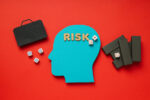Numerous websites suggest egg whites as a burn remedy, but let’s cut to the chase: it’s not true. Egg whites can worsen burn situations. As a detail-oriented paramedic, I owe you a comprehensive explanation. So, let’s dissect why egg whites aren’t suitable for treating burns.
Egg whites are primarily water (90%) and proteins (10%), like albumin and globulins. We know water helps soothe minor burns, and egg whites, often cooler than the burn site, seem beneficial. However, let’s dive deeper into burns and evaluate if proteins in egg whites offer any advantage over plain water.
Understanding Burns and Their Types
Burns vary, including chemical, electrical, friction, radiation, and thermal (hot and cold). Regardless of the cause, burns can severely damage skin and underlying tissues.
Severity-wise, burns are categorized into three main classes based on depth:
- First-degree burns affect only the epidermis.
- Second-degree burns damage both the epidermis and dermis.
- Third-degree burns extend to the muscle tissues beneath.
A proposed fourth degree includes burns reaching the bones, but this classification hasn’t gained widespread acceptance in medical communities.
Treating burns focuses on stopping the burn, alleviating pain, preventing infection, and avoiding dehydration and hypothermia. Our skin, an incredible organ, guards against pathogens and helps regulate body fluids and temperature. When compromised by burns, risks of infection, dehydration, and hypothermia increase. In the U.S., infections are the leading cause of death in burn victims, causing around 10,000 fatalities annually.
Evaluating Egg Whites in Burn Treatment
- For chemical burns, the protocol involves brushing off the chemical and using abundant water. Egg whites are ineffective here, as well as for electrical, thermal, or friction burns.
- Focusing on 1st and 2nd-degree burns (since 3rd-degree burns damage nerve cells, numbing pain), a study in Milas, Turkey, compared water and other substances, including egg whites. Results showed no significant pain relief difference between egg whites and water. While cooling agents can offer some relief, home remedies often increase complication risks compared to water.
- Egg whites heighten infection risks. Egg components can harbor bacteria like salmonella, contradicting the belief that they help with infections.
- Burn victims lose fluid from their interstitial space, leading to dehydration. Egg whites offer no benefit in addressing this.
Debunking the Egg White Burn Treatment Myth
The myth that egg whites are a remedy for burns has circulated for years, often passed down through generations as a traditional home remedy. Its origins are somewhat murky, as is often the case with folk medicine, but it seems to be rooted in the innate human desire to find immediate, accessible solutions for painful ailments like burns. The prevalence of eggs in households made them an easy-to-reach remedy, leading to the widespread belief in their healing properties.
The Plausible Theory of Egg Whites
This myth gained traction partly because egg whites contain proteins and water, components seemingly ideal for soothing burns. The cooling effect of egg whites, coupled with their protein content, might have been perceived as beneficial for skin repair and pain relief. This simple logic, lacking medical backing, contributed to the perpetuation of the myth.
Historically, egg whites were thought to help with stopping burns and relieving pain. However, medical research shows that they do not halt the burning process and offer no better pain relief than water. More critically, egg whites can increase the risk of infection, a major concern in burn treatment, due to the potential presence of bacteria like salmonella.
Traditional Remedies in Modern Medicine
While egg whites for burns are a disproven remedy, numerous other traditional treatments have found a place in contemporary healthcare. This raises questions about the criteria for integrating such remedies into modern medical practices. Are there other traditional treatments, like egg whites, that are widely accepted but lack scientific validation? The challenge lies in distinguishing between effective folk remedies and those that are merely placebos or potentially harmful.
The Influence of Culture on Medical Myths
Cultural heritage plays a pivotal role in shaping health beliefs and practices. Across various societies, traditional remedies are often deeply embedded in the community’s identity and history. These practices passed down through generations, are not merely medical interventions but also carry significant cultural value and emotional attachment. Understanding the depth of these beliefs is crucial in addressing medical myths. It involves recognizing that for many individuals, these practices are intertwined with cultural identity and familial traditions.
One of the primary challenges in debunking health myths like the egg white treatment is the deeply ingrained nature of these beliefs within cultural contexts. Changing these perceptions is not just about presenting scientific evidence; it’s also about navigating the emotional and cultural ties that people have with these practices. This change requires a sensitive, respectful approach that acknowledges the cultural significance of these practices while gently guiding them toward scientifically sound health behaviors.
Effectively communicating scientific health information to culturally diverse populations is a delicate task. It requires a strategy that is not only informative but also culturally sensitive. Health educators and medical professionals need to develop communication methods that respect cultural beliefs while clearly explaining the scientific rationale behind medical advice. This might involve collaborating with community leaders, using culturally relevant analogies, and ensuring that the information is accessible and understandable to people from diverse backgrounds.
While promoting science-based health practices, it is essential to maintain respect for cultural practices. Healthcare providers should aim to build trust and understanding, not just enforce scientific views. This involves listening to and acknowledging the cultural practices of patients, understanding the context of these beliefs, and finding a middle ground where traditional beliefs and scientific evidence can coexist. This respectful approach can help in gradually shifting the perceptions towards more evidence-based practices without alienating individuals from their cultural roots.
Education plays a crucial role in bridging the gap between cultural health practices and scientific evidence. Educational initiatives should focus on creating awareness about the importance of evidence-based medicine while also understanding the cultural context. Schools, community centers, and public health campaigns can be instrumental in this regard. By incorporating culturally relevant educational materials and employing a narrative that resonates with the target audience, these programs can effectively respectfully promote scientific health practices and
The Role of Social Media in Spreading Health Myths
Social media’s role in perpetuating health myths like the egg white burn treatment is a critical issue. This discussion centers around the rapid spread of misinformation online and the impact it has on public health decisions. Debating this topic involves analyzing the mechanisms by which health myths gain traction on social media, the responsibility of platforms in regulating content, and strategies for promoting accurate health information in the digital age.
The Ethics of Home Remedies in Parental Care
The use of home remedies, including egg whites for burns, raises ethical questions about the balance between parental autonomy and child safety. Parents often make healthcare decisions based on personal beliefs, cultural practices, or familial traditions. While respecting a parent’s right to choose what they believe is best for their child is important, it becomes ethically complex when these choices involve unverified or potentially harmful treatments. This debate necessitates a careful consideration of where to draw the line between honoring parental freedom and safeguarding the child’s well-being.
Employing home remedies like egg whites in treating children’s injuries presents potential risks. The use of such unverified treatments can lead to delayed medical care, worsening of the condition, or unintended side effects. In pediatric care, where children are more vulnerable and may not be able to articulate their symptoms accurately, the stakes are higher. Ethical considerations must factor in the vulnerability of children and the responsibility of caregivers to provide safe and effective treatments.
Pediatricians and healthcare professionals play a crucial role in guiding parents toward scientifically sound medical treatments. Their responsibility extends beyond providing medical care to educating parents about the risks and benefits of various treatment options. This includes debunking myths about certain home remedies and offering evidence-based alternatives. Pediatricians must navigate this role delicately, balancing respect for parental authority with the imperative to advocate for the child’s best health interests.
Child welfare organizations are instrumental in shaping policies and creating awareness about safe healthcare practices for children. They have the dual task of safeguarding children’s rights to proper medical care and supporting parents in making informed healthcare decisions. These organizations can provide resources, educational materials, and support systems that help parents understand the importance of evidence-based treatments and the risks associated with certain home remedies.
Developing educational strategies that harmonize cultural beliefs with medical advice is pivotal in addressing the ethics of home remedies in parental care. Education campaigns should be tailored to respect cultural nuances while emphasizing the importance of evidence-based medical practices. This might involve culturally sensitive communication, community engagement, and collaboration with cultural leaders to foster a deeper understanding and acceptance of scientifically backed healthcare practices among parents.
Why Egg Whites Aren’t the Answer
Egg whites do not effectively stop burns, offer no better pain relief than water, increase infection risks, and do not aid in preventing dehydration or hypothermia. Stick to water for minor burns and seek medical attention for more severe cases. This debunking aligns with the medical community’s consensus, emphasizing the need for proper burn care without resorting to unproven home remedies.”


